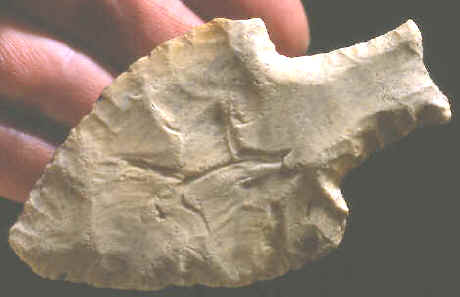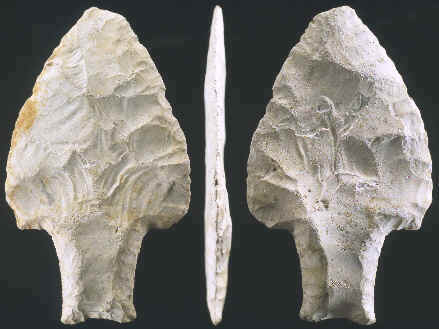|
STEMMED FLUTED
"FISHTAIL"
POINT
"FISHTAIL" POINT This
stemmed fluted "Fishtail" point was found several years ago on the bank of the New
River Lagoon in northern Belize, next to the Mayan site of Lamanai. Only
one or two other Stemmed Fluted points have been recorded to date from
Belize. This point is a nice example of a fairly rare Paleo-Indian point form that are
generally known as Fishtail projectile points. Although this example seems
to be wider and thinner than points illustrated from sites like Fell's
Cave or El Inga. It's possible that it was used as a knife rather than a
projectile point.
Stemmed Fluted points
have been found as far south as the southern tip of Argentina on the Fellís Cave
site where they have been dated to 11,000 years ago. These fluted and
unfluted stemmed points and fishtail points without shoulders have been
found in several different countries to the north all the way to the southeastern
area of the United States. Stemmed Fluted and Unfluted points are found in a wider area than almost any other
Paleo point form in the Americas. |
|
References: 1973,
William J Mayer-Oakes, SCIENTIFIC AMERICAN--EARLY MAN IN AMERICA "Early
Man in the Andes", pp 53-61. |

